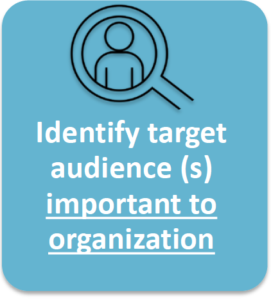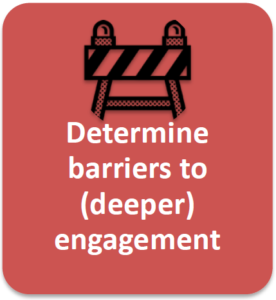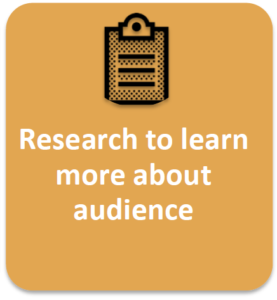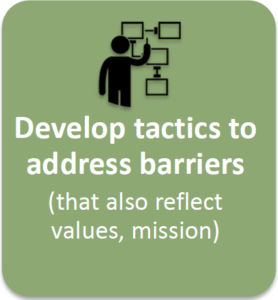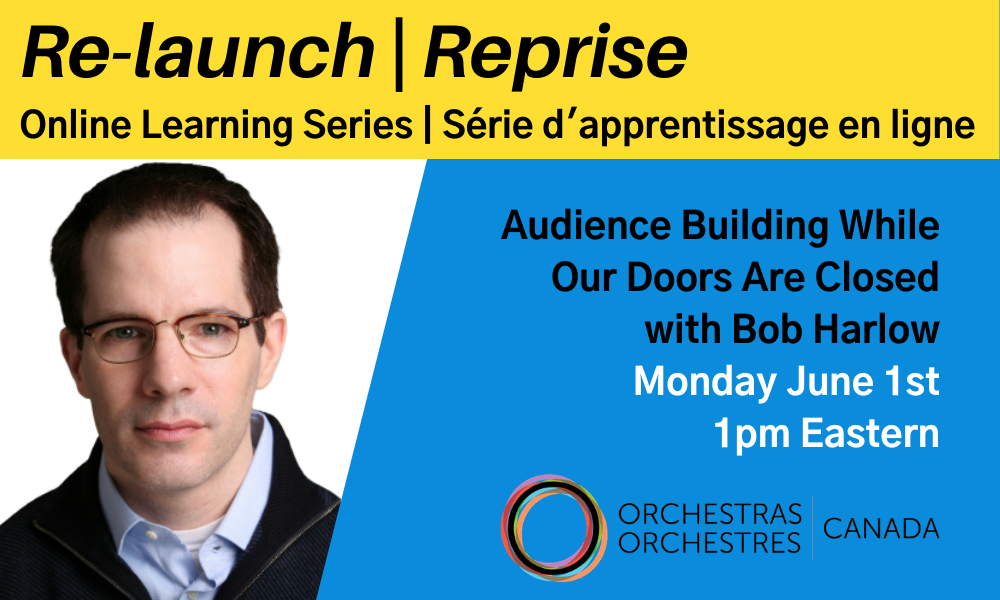
Audience Building While Our Doors Are Closed
Even though our concert halls are closed, staying on our patrons’ minds is critical as the sector positions itself for reopening. As part of Orchestras Canada’s Re-launch online learning series, we welcomed Bob Harlow to present on what strategic audience engagement might look like right now, and how orchestras might target their current efforts to specific audiences to strengthen their bonds with them. Bob’s presentation included case studies of three arts organizations that targeted segments of their audience, found out what was keeping those segments from attending their events, and developed content strategies to overcome the barriers.
Bob presented a framework for approaching this audience development work – as relevant now as it is in times of busy on-stage activity. The key points to this are outlined below.
An audio recording of this session can be found here.
1. Identify target audience(s) important to organization
Bob outlined the process of breaking your audience (or potential audience) into segments, and deciding on a specific group to target that is important to your strategic plan. This could be a totally new audience, or a current audience that you’d like to engage more deeply with. He emphasized the importance of linking this work with your strategic plan and artistic goals: without broad organizational buy-in and commitment, it will not be sustained. Bob gave examples of one organization that decided to engage more deeply with their recurring single-ticket buyers, and another that wanted to bring more teens and young adults to the ballet
2. Determine barriers to (deeper) engagement
What is stopping potential audiences from engaging with your organization in the way you’d like? Don’t assume: ask them! Is limited music education preventing people from engaging with your orchestra? Try to find out. Some of the organizations Bob spoke about were dealing with audience’s perceiving of opera and ballet as closed or stuffy art forms.
3. Research to learn more about audiences
Bob recommended getting to know this segment of your audience (or potential audience) as well as you can. He emphasized the need to act on facts, not hunches, by surveying the target group, bringing them together at focus groups, and having conversations with them. This stage is an important bridge between steps 2 and 4, which confirms or changes the barriers determined in step 2, and explores how these barriers might be dismantled in step 4.
4. Develop tactics to address barriers
After determining the barriers to engagement and discussing potential ways through these with the target audience, Bob encouraged developing a content strategy specific to the audience in question. He gave two examples: behind-the-scenes tours at Seattle Opera to achieve deeper engagement among keen audience members attending their performances of the Ring cycle; and videos that show what happens each day at Pacific Northwest Ballet to open up a traditionally closed society to teens and young adults.
This framework can be used in determining what kinds of digital content orchestras might offer their audiences while they cannot gather in person, and at what price point. With many patrons still hungry for content from the orchestras they know and love, approaching audience development activities through this framework will ensure that the engagement is lasting, and that the activities are mission-driven.
Further Reading
- The Road to Results by Bob Harlow: Nine effective practices for building arts audiences.
- Case studies from the Wallace Foundation’s research
- Marketing and the Concert Experience: Presentation on the Orchestra X project by Aubrey Bergauer at OC’s 2018 national conference.

